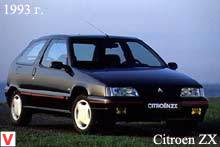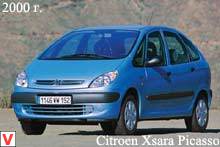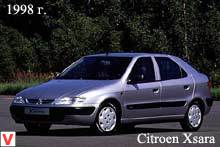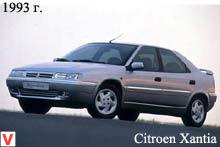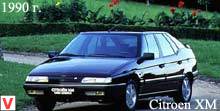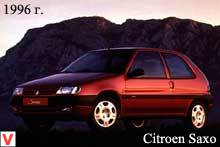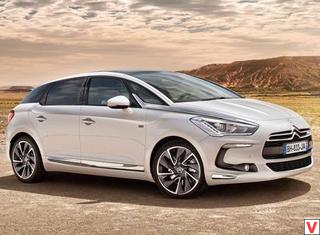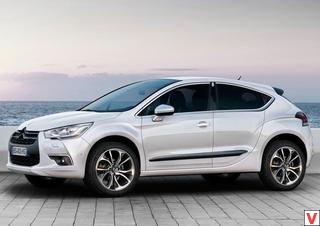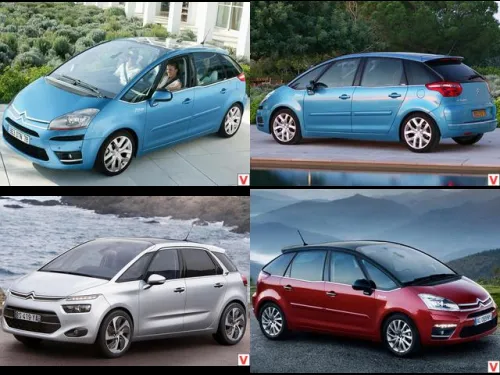
The Citroen C4 Picasso lineup consists of two modifications: five-seater and seven-seater. The latest version debuted in September 2006 at the Paris Motor Show, and the five-seat version appeared only in January 2007. After the five-seater version saw the light, for the convenience of distinguishing the two C4 Picasso models, the seven-seater version received the Grand prefix. At the heart of the C4 Picasso is the Citroen C4 and Peugeot 307 platform. The Quadruple C4 Picasso looks very different from its 7-seater twin.
Moreover, it is generally perceived as a completely different car: a dynamic silhouette, a very original glazing line, new bumpers and optics are the main distinguishing features of the “short” C4 Picasso. Dimensions play a significant role in this: the “five-seater” is shorter by 12 centimeters and a couple of centimeters lower. Designer delights adorn the C4 Picasso from the front to the rear of the car. The most daring decisions are a huge windshield with an area of 2 m² and a stepped sideline.
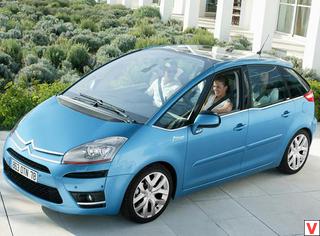
By the way, the widescreen windshield is not so much for beauty, but for better visibility: it provides the C4 Picasso the largest glazing area in the class (6.2 m² with a panoramic roof and 5 m² without it). So that the car does not look too heavy, the window-sill line, accentuated by the molding, lowers a few centimeters on the rear doors and extends to the fancy-shaped taillights. Sitroenovtsy made a real breakthrough as interior decoration materials. The steering wheel is sheathed with dense leather, the chamois chair, the front panel is made of elastic vinyl, and even an imitation of aluminum looks decent and appropriate.
The driver and front passenger are provided with personal climate control units. In the center of the instrument model is a large screen navigation system, to the left of it is an electronic speedometer, and to the right is an electronic tachometer. Interestingly, despite the shortened body, the five-seater C4 Picasso has a quite impressive 500-liter luggage compartment. And if this is not enough, then you can fold the back sofa and get as much as 1734 liters of useful volume. But to make the trunk as much as possible, in the Citroen donated "reserve Coy." But the C4 Picasso has the longest distance between the rear wheel arches in the class (1.17 m).
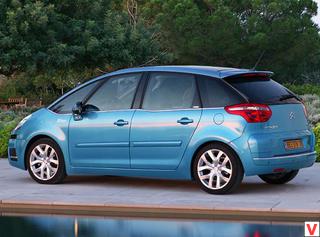
And in the car is full of all sorts of "glove compartments", drawers and pockets. In addition, a Modulbox system was created for the C4 Picasso, which is a removable trolley (maximum load of 22 kg) and a removable 40 l fabric bag. The gamma of engines consists of two petrol engines of 1.8 (127 hp) and 2 liters (143 hp) and a pair of “diesels”: 1.6-liter gives 110 l.c. and 240 Nm, and the torque can be increased to 260 Nm thanks to the overboost function, which allows for a time to increase the fuel supply pressure, as well as 2.0 l HDi with a capacity of 138 hp.
Depending on the engine, the Citroen C4 Picasso can be equipped with the traditional "mechanics", automatic transmission or robotic manual gearbox. Separate words are deserved by the fact that the Citroen C4 Picasso is recognized as the safest compact van. According to the results of the crash test conducted by the method of EuroNCAP, the car received 35 points out of 37 possible. The crash test experts assigned the car a maximum rating of five stars. In addition, the safety of children in the C4 Picasso experts rated three stars, and the safety of pedestrians in case of collision - two stars. Issue kompaktvena was established in the Spanish city of Vigo.
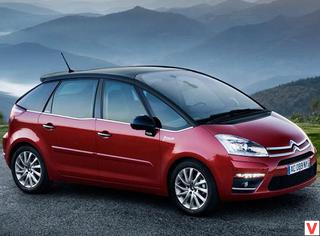
Restyled version of the C4 Picasso was presented at the Paris Motor Show in 2010. First of all, the car received a modified appearance. New front bumpers with built-in LED lights "daylight" and stylized, with the inscription as if by hand, the brand logo Citroen on the tailgate. Taillights got a black edging. Headlights integrated into head optics during the update were discolored. The updated model can also be recognized by chrome trim on the doors (with options Exclusive). Also, the car received two new types of 17-inch alloy wheels (Scandola and Malawi).
For the Citroen C4 Picasso, the Black Top option is offered - the roof is painted in a black diamond color. Micro-hybrid e-HDi technology has become available for C4 Picasso. This technology is not really a full-fledged hybrid, but simply a diesel engine with automatic start-stop, energy recovery during braking and a 6-speed "mechanics". This saves up to 15 percent of fuel in the urban cycle. Significantly improved fuel consumption and CO2 emissions.
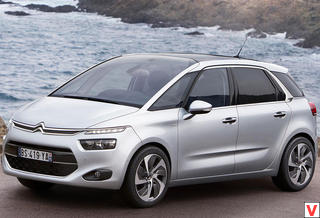
Thus, the consumption of diesel fuel in the combined cycle does not exceed 4.8 liters per 100 km for the standard Picasso version (5.0 liters for the Grand version), and the level of CO2 emissions in the same work cycle does not exceed 125 (130) g / km. Freshness of the cabin gives new upholstery and doors (also with a complete set Exclusive). Citroen C4 Picasso now installs the so-called Citroen eTouch system. In addition to the emergency call function, it includes an electronic service book and the EcoD service. Also undergone a review of the suspension system for greater comfort of the driver and passengers.
In 2012, the concept car Technospace was introduced at the Geneva Motor Show, which later formed the basis for the production version of the second-generation C4 Picasso, which debuted in April 2013 at the Shanghai Motor Show. The car has not only radically changed in appearance, it has become much more practical, more economical and more technological than its predecessor. The minivan looks futuristic. Designers were not afraid to use two-tier head optics. The upper diode strips are responsible for the "day" light, under them - the main headlights, and at the very bottom - fog. In general, the look turned out bright, memorable, but not for everybody.

Thanks to the transition to the new modular platform EMP2, the car dropped 140 kg (the weight of the heaviest set of minivans does not exceed 1300 kilograms). New lightweight materials, including high-strength steels, composite tailgate (electrically operated) and rear floor panel, aluminum hood and, of course, a new layout with more compact dimensions, helped reduce the mass. According to the official press release of the brand, the length of the second-generation C4 Picasso is 4428 mm (which is 40 mm shorter than the previous version), the width remained at the same level of 1826 mm, and the height decreased to 1611 mm.
The wheelbase has increased to 2785 mm. The EMP2 modular platform also allowed the engine to be lowered by 40-50 mm and the gauges significantly expanded: the front one - by 82 mm, the rear one - by 31 mm. The salon is interesting not only by the wide possibilities of transformation, but also by the new design in the “loft” style. In the center of the front panel are two color display - top, 12-inch, performs the function of the dashboard, and the touch of the bottom, a diagonal of 7 inches, replaces the usual controls.
Panoramic windshield with a large viewing angle - standard equipment. The total area of the glazing reaches 5.3 square meters. Citroen claims that the car’s interior has remained spacious, and the legroom of passengers has even increased, as has the amount of luggage (537 liters - 37 liters more than before).
When the second-row seats are maximized forwards, the luggage compartment volume increases to 637 liters, it can be significantly increased by folding the rear separate seats with adjustable backrests and the front passenger seat. As an option, an automatic parking system and a circular video review, as well as active cruise control and the function of switching from high beam to dipped beam when approaching oncoming vehicles are provided. For the model, there is a 1.6-liter engine range: gasoline, with a capacity of 120 and 156 horsepower, and diesel engines, developing 92 and 115 horsepower. The units will be available in a pair with a six-speed manual gearbox or a six-band EGS “robot”.
The top-end Citroen C4 Picasso can accelerate from zero to one hundred kilometers per hour in 9 seconds, stopping acceleration at around 209 kilometers per hour. Citroen claims that the new C4 Picasso with a 92-horsepower diesel is the first minivan, emitting less than 100 grams of CO2 per kilometer. This is facilitated by the work of the stop-start system.
